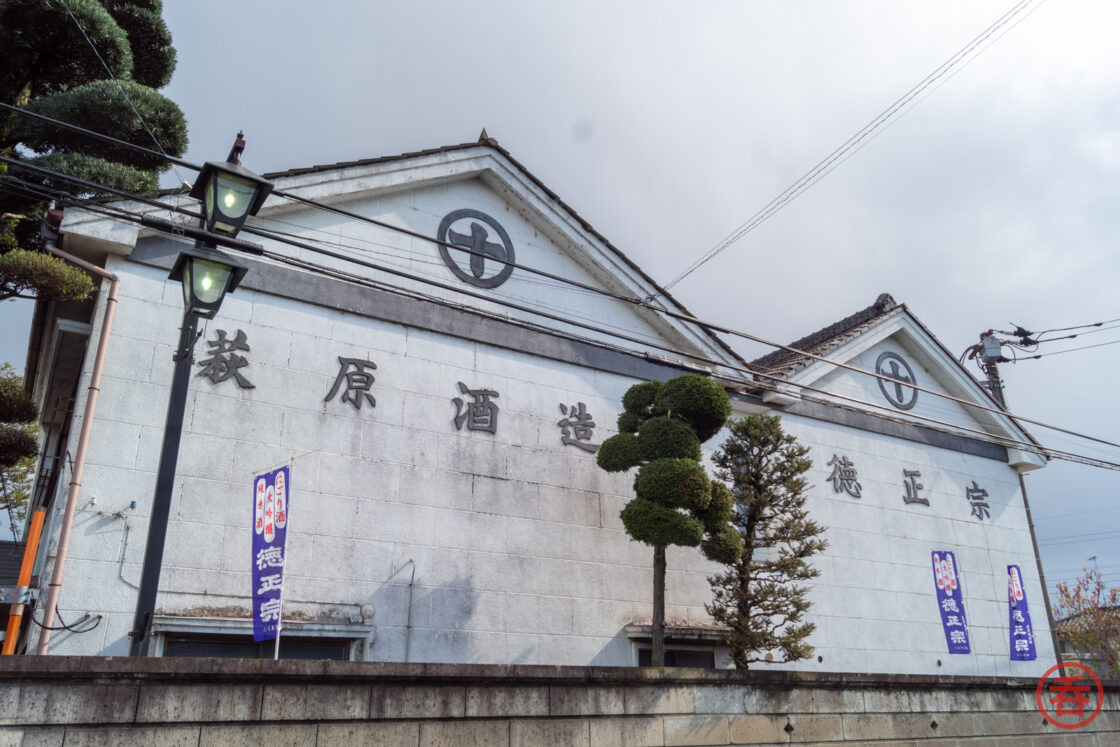Today we head to Hagiwara Shuzo, a sake brewery in Ibaraki Prefecture’s Sakai-cho. Founded in 1855, the brewery is situated a stone’s throw away from the Tone River that forms the border between Chiba and Ibaraki Prefectures.
The navigable, pure waters of the Tone River have made the area popular since the Muromachi Period, which ran from 1334 to 1573. Hagiwara Shuzo itself started brewing in 1855, and it’s the seventh-generation Yasuhisa Hagiwara that showed me around the grounds in April of this year.
The brewery is best known for its Tokumasamune brand, offered via six of the eight special classifications of sake: futsu, honjozo, junmai, junmai ginjo, daiginjo, and junmai daiginjo. There’s also a table sake (futsu-shu). Separately, they also do special releases like the 20% abv, long-matured Tokunotoki 20, and the Kuranama Junmai Ginjo that uses only Ibaraki’s famed Hitachi Nishiki rice. Like many sake makers, there are also seasonal releases like the unpasteurized, season-first hatsushibori and post-summer hiyaoroshi.
The name Tokumasamune is said to have come from a proverb that (very) roughly translates as “drink when fun, drink for fun, and drink with the ups and downs of life.”
Given the lineup, the rice polishing rate varies from 70% to 40% of the original weight. Hagiwara Shuzo sources their yeasts from fellow Ibaraki sake maker Meiri Shurui.


Don’t expect to see a huge volume come out of the brewery. Where other sake breweries have shifted priority to other product categories in the face of declining domestic demand, Hagiwara Shuzo focuses on maintaining traditions and the quality of their sake. They will spend as long as forty days to create their shubo to feed production.
If you guessed that means small-scale, you’re right. The numbers tell the story: their yearly production of 500 koku translates to around 90,000 liters.
Around 60% of that output will be consumed within Ibaraki Prefecture. For international sales, they have a presence in both Singapore and Taiwan, but are looking to expand their footprint more globally (hint hint to anyone in the market).



Getting to the sake itself, I had the opportunity to sample some of the higher-end junmai daiginjo. I found it easily approachable yet highly aromatic, presenting lots of zesty citrus notes of orange, yuzu, and lemon peel.
And I’m not alone. In 2017 their Tokumasamune Junmai Ginjo Kuranama picked up a Platinum medal at France’s Kura Master. This year they’ve picked up a Gold medal at London’s International Wine Challenge and, out of a pool of 351 entries in the Premium Daiginjo category at The Fine Sake Awards, was one of only 19 winners of a Grand Gold award.
Expect to see more great sake coming out of Ibaraki’s Hagiwara Shuzo in the near future!




Hi there! I created and run nomunication.jp. I’ve lived in Tokyo since 2008, and I am a certified Shochu Kikisake-shi/Shochu Sommelier (焼酎唎酒師), Cocktail Professor (カクテル検定1級), and I hold Whisky Kentei Levels 3 and JW (ウイスキー検定3級・JW級). I also sit on the Executive Committees for the Tokyo Whisky & Spirits Competition and Japanese Whisky Day. Click here for more details about me and this site. Kampai!

